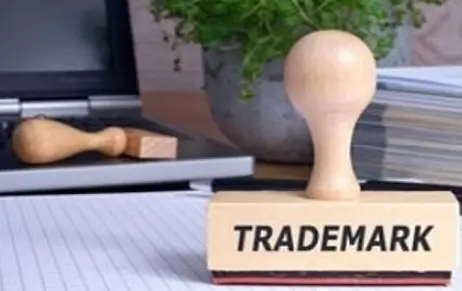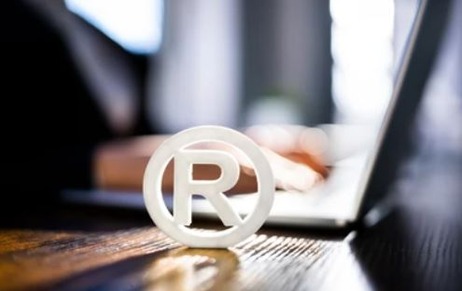TRADEMARK A trademark is something that we encounter on a regular basis. It is the…
Trademark Infringement In India’s Pharmaceutical Companies
Introduction
Trademark Infringement In India’s pharmaceutical Companies is prospering, with tremendous expansion over the last few decades. The Indian government is working hard to promote this business by enacting and implementing laws that are in line with international norms. Intellectual property rights protection is becoming increasingly important for businesses as the market expands and industry participants invest. Despite the fact that Section 13 of the Trade Marks Act of 1999 prohibits the use of chemical names as trademarks, it is normal practise to name a drug after the organ it treats (“Liv” for the liver, for example), the condition it cures, or the treatment’s principal ingredient.Since a generic organ, disease, or ingredient cannot be trademarked, no one can own it. There is a profusion of similar and often confusing trademarks for drugs as a result of the Trade Marks Registry enabling brand names containing the primary chemical ingredient, organ, or ailment to be registered. This blog examines the present framework for dealing with this dilemma, as well as the role of intellectual property and general medicine branding in India.
Trademark similarity in the pharmaceutical sector: Framework
The brand name or drug name in the case of pharmaceutical trademarks is usually derived from the drug’s treatment, salt composition, or any other related medical term, and thus does not have an inherent distinctive character; however, ‘distinctiveness’ is a requirement for a mark to qualify as a trademark. As a result, it causes confusion among the general people. A trademark must not be confusingly similar to a previous brand, according to Section 11 of the Trade Marks Act, 1999.Customers should be able to quickly distinguish between items based on the brand name, drug name, and trade dress when purchasing pharmaceutical products or drugs to minimize or reduce errors. As a result, the procedure of protecting a brand name or medicine name becomes more difficult, and evidence of secondary meaning or acquired distinctive character is used to determine distinctiveness.Another important provision in this regard is Section 13 of the Trade Marks Act, 1999, which states that a trademark cannot be any name of chemical elements, compounds, or International Nonproprietary Names (INNs) declared by the World Health Organization and notified by the Registrar of Trademarks in 2012, or which are deceptively similar to the INNs. Because the INNs listed are generic names for active medicinal compounds, no pharmaceutical corporation can claim exclusive rights to them, and they can thus be used by anybody.
Here are a few instances of trademarks that are confusingly similar: “Trivedon” and “Flavedon” were said to be dissimilar. This followed a case in which the brand names “Mexate” and “Zexate” were deemed to be distinct despite the fact that they were rhyming words. In the case of Astrazeneca UK Ltd. v. Orchid Chemicals & Pharmaceuticals Ltd., 2006 SCC OnLine Del 1668 (which was later affirmed by the Division Bench in Astrazeneca UK Ltd. v. Orchid Chemicals & Pharmaceuticals Ltd., 2007 SCC OnLine Del 237), the Delhi High Court held that the two marks derived the prefix “Mero” from the drug “Meropenem” and that there was no similarity between them.
Judicial Trends regarding Trademark Infringement In India’s pharmaceutical Companies
Cadila Healthcare Ltd. v/s Cadila Pharmaceutical Ltd, 2001(5) SCC 73
The appellants in this case employed the medicine ‘FALCIGO’ to treat cerebral malaria, and Falcipharum was given a trademark. After about a year, the responders began to use the term Falcitab to describe the same condition. Appellants filed a complaint at Vadodara’s district court, seeking an injunction prohibiting them from using the term Falcitab. Appellants alleged that both pharmaceuticals were used to treat the same ailment, that the labels are misleadingly similar, and that both medicines were utilised as a last resort. The respondent company claimed that the word Falci, which is a prefix of the word, is derived from the disease Falcipharum malaria and is used in the pharmaceutical industry.Despite the fact that both medications are available only with a prescription, SC believes that this information is insufficient to avoid confusion. Because misinterpretation of medicinal products can be fatal, the SC stated that the confusing similarity test can be amended in the case of pharmaceutical medicines. As a result, the injunction was found to be properly applicable in this situation.
Held: Depending on the facts and circumstances of each case, the Hon’ble Supreme Court established various parameters for resolving the question of misleading likeness. The following are the elements:
- The mark’s kind, such as whether it’s a word mark, a label mark, or a composite mark
- The marks’ degree of likeness is phonetically comparable, and so similar in concept.
- The type of items for which they are being utilised as trademarks.
- The nature, character, and performance of the competitor dealers’ items are identical.
- The type of buyer who is most likely to acquire and/or use items having the marks they demand, based on their education and intellect, as well as the degree of caution they are likely to take in doing so.
- The manner in which the items are purchased or orders are placed; and
- Any other facts that may be significant in determining the degree of dissimilarity between the competing marks.
Cipla Limited v/s M.K. Pharmaceuticals MIPR 2007 (3) 170
Plaintiff produced “NORFLOXACIN” tablets in blister packaging that were oval in shape and orange in colour under the trademark “NORFLOX-400.” Defendant utilised the identical name, ‘NORFLOX-400,’ but that was not the name for which plaintiff sued; rather, plaintiff claimed that defendant imitated the shape, colour, and blister packing of pills, causing confusion. It is well established that there can be no colour monopoly because no one requests for medicine based on its colour, form, or packaging. Blister packaging is fairly frequent, and tablets are often round or oval in shape. As a result, no injunction was given.
Held:As a result of this decision, it is established that the name of the medicine is distinctive, not the colour, shape, or packaging, even if purposeful imitation occurs.
Neon Laboratories Ltd v/s Medical Technologies Ltd. &ors 2015(64) PTC 225 (SC)
In 1992, the appellant submitted a trademark registration application. The trademark ‘ROFOL’ was issued to the appellants in 2001, however the product was not introduced onto the market until 2004. The respondent introduced the medication ‘PROFOL’ in 1998. As a result, the respondent had a prior user date, whereas the appellant had a prior registration date. The case was ruled in favour of the respondent because the respondent began producing and selling, as well as registering and earning substantial goodwill in the meanwhile. As a result, the trademark ‘ROFOL’ was placed under injunction. Both the balance of convenience and irreparable damage factors of temporary injunction were in favour of respondent.
Held:In this decision, the Supreme Court stated that a mark should typically be a new innovation, and that if it is an existing word, it should not have descriptive features relating to the product.
Kaviraj Pandit Durga Dutt Sharma v/s Navaratna Pharmaceutical Laboratories AIR 1965 SC 980
Respondent manufactured medical items under the registered trademarks ‘NAVARATNA’ and ‘NAVARATNA pharmaceutical laboratories,’ while appellant sold Ayurvedic pharmaceutical products under the name ‘NAVRATNAKALPA.’ The Appellant appealed the District Court’s decision and also filed an Original Petition in the High Court of Travancore Cochin, claiming that because the term ‘Navaratna’ is commonly used by Ayurvedic physicians for medicines made from the nine precious stones and is a generic term used throughout the Ayurvedic system of treatment, plaintiff cannot claim monopoly over it.
Held: Respondent manufactured medical items under the registered trademarks ‘NAVARATNA’ and ‘NAVARATNA pharmaceutical laboratories,’ while appellant sold Ayurvedic pharmaceutical products under the name ‘NAVRATNAKALPA.’ The Appellant appealed the District Court’s decision and also filed an Original Petition in the High Court of Travancore Cochin, claiming that because the term ‘Navaratna’ is commonly used by Ayurvedic physicians for medicines made from the nine precious stones and is a generic term used throughout the Ayurvedic system of treatment, plaintiff cannot claim monopoly over it.
Astra-IDL Limited v/s TTK pharma Limited AIR 1992 Bom 35
Plaintiff sought a permanent injunction against defendant for using the trade mark ‘BETALONG,’ which is confusingly similar to plaintiff’s mark ‘BETALOC.’ Defendant claimed that he launched the medicine for hypertension and angina pectoris treatment under the trademark ‘BATALONG’ and filed a pending application. The product, according to the defendant, is regularly advertised and has earned a solid reputation and goodwill. This medicine is classified as schedule ‘H’ and can only be sold by pharmacists with the proper licence. The term BETA, according to the defendant, is highly widespread in this industry.Finally, defendant argued that he has been in the market since 1986, and plaintiff’s complaint was filed in 1988, therefore plaintiff was late in approaching the court, and so he should not be entitled to interim relief.
Held: i) That the defendants were using the infringing mark and deceptive cartons with the intent of trading on the plaintiffs’ reputation, and that their contention that there could not be any deception because the medicines required a doctor’s prescription was not acceptable as the defendants’ mark and phonetically similar to plaintiffs’ registered trade mark; ii) That the defendants were using the infringing mark and deceptive cartons with the intent of trading on the plaintiffs’ reputation and their contention The court concluded that when schedule ‘H’ pharmaceuticals are sold over the counter without a doctor’s prescription, the doctor’s prescription component is less essential, but if the packaging is not similar, the fact that it is a schedule ‘H’ drug should be given appropriate consideration.
Wyeth Holdings Corporation Anr v Burnet Pharmaceuticals (P) Ltd 2008 (36) PTC 478
The claimants were the owners of the trademark FOLVITE, which had been registered in 1949. The defendant’s products were first marketed under the name FOLCACID. The mark was subsequently altered to FOLV, and they wished to register it. The plaintiff barred the defendants from using the mark FOLV because it is physically and phonetically similar to its own mark FOLVITE. The defendants argued that the acronym FOL in FOLVITE stands for folic acid, and the abbreviation VIT stands for vitamin, both of which are recognized trade terms. They argued that when a word has common elements, more attention should be devoted to the uncommon elements.As a result, both sets of letters FOL and VIT must be ruled out when determining whether there is deceptive similarity. All that is left of the plaintiffs’ mark is a ‘e.’ The defendant argued that the Supreme Court’s findings in the Cadila case must be limited to circumstances in which competing marks are used for medications of different compositions. The defendant’s argument that FOLVITE should be viewed as a mixture of FOL and VIT was rejected by the Court. The Court ruled that the mark’s validity cannot be questioned as long as it remains on the register.The court also noted that the defendant had originally used the term Folic acid, which has since been altered to FOLV, a mark that could cause consumer confusion.
Conclusion
Given the ambiguity in the law, the prosecution will face a difficult task in proving beyond a reasonable doubt that the accused meant to infringe on the complainant’s registered trademark. Even the tiniest potential of confusion or deception related with the use of deceptively similar marks on medicinal products has been taken into account by the courts. They’ve always used the approach of judging misleading likeness from the perspective of a consumer with average intelligence and shaky memory. In pharmaceutical trademark issues, the reliance on human memory has been given little weight, as even a smidgeon of doubt on the side of a consumer could result in a fatality.This appears to be the correct strategy, especially when considering consumer well-being. To avoid a trademark conflict, pharmaceutical brand owners must do thorough searches both in the Trademarks Registry’s databases and in physical markets before designating a trademark.
Author: Anuja Saraswat – a student of B.A.LL.B (Hons.) from NMIMS Kirit P. Mehta School of Law (Mumbai), in case of any queries please contact/write back to us via email vidushi@khuranaandkhurana.com or contact us at IIPRD.



